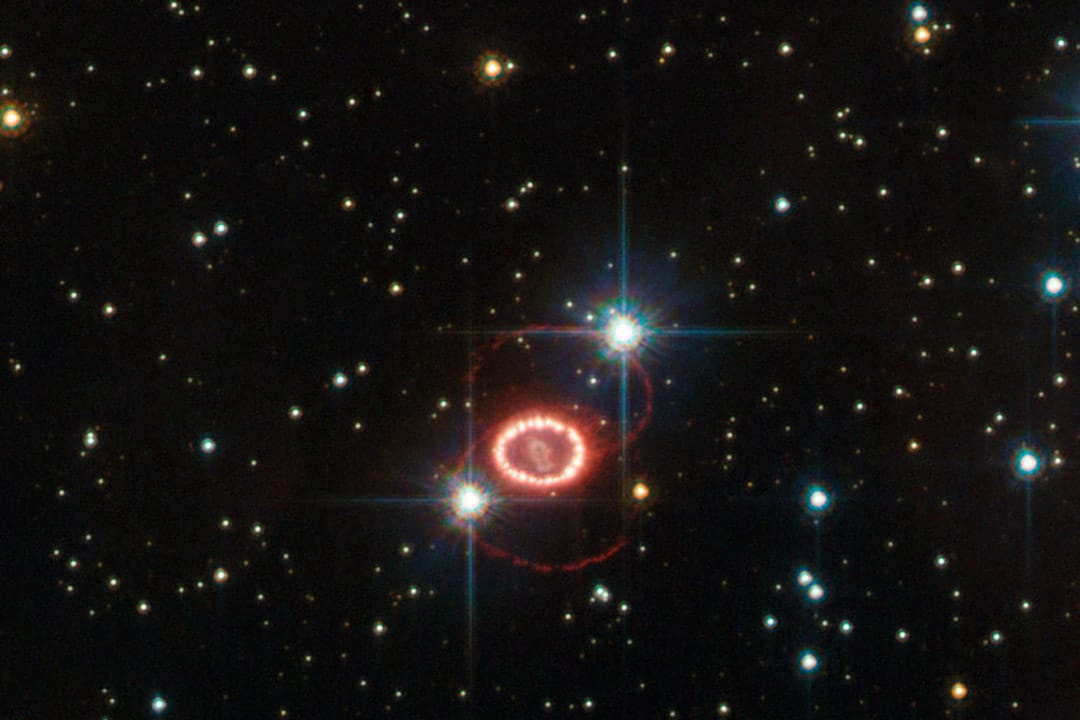Yvette Cendes, a PhD student in the Dunlap Institute for Astronomy & Astrophysics, used mathematical modeling to visualize a time-lapse of the aftermath of Supernova 1987A.
Based on existing quantitative data, the time-lapse observes the supernova’s shockwave — a powerful wave that causes a star to explode in space — from 1992–2017.
Since publishing her team’s findings in The Astrophysical Journal, Cendes has delivered several talks about Supernova 1987A.
The significance of the time-lapse
The team’s analyses show that the “expanding remnant” of the supernova is shaped like a three-dimensional torus, or donut, rather than a two-dimensional ring.
Cendes applied statistical and mathematical techniques to the time-lapse to show that the supernova produced a shockwave expanding outward and slamming into debris that ringed the original star before its demise.
As a result of the growing torus punching “through the ring of debris,” the supernova’s shockwave has accelerated, increasing in speed by some one thousand kilometres per second.
The team also found that the shockwave from the supernova models a classic shockwave system.
A principle similar to a shockwave can be seen when a rock creates ripples in a pond. In space, however, a shockwave operates on a much larger magnitude and causes a supernova to explode.
This explosion produces supernova remnants, which are seen in the donut-shape formation of Supernova 1987A.
The origins of Supernova 1987A
U of T astronomer Ian Shelton and telescope operator Oscar Duhalde discovered Supernova 1987A on February 24, 1987. The pair was the first to observe the death of the supergiant star and its resultant explosion from the Las Campanas Observatory in northern Chile.
Despite being 168,000 light-years — or 1.6 quintillion kilometres — away from Earth, Supernova 1987A has been the brightest supernova to appear in our skies since Kepler’s Supernova in 1604.
According to NASA, the supernova “blazed with the power of 100 million suns” for “several months following its discovery.”
While 1.6 quintillion kilometres might seem like a titanic distance, Supernova 1987A is “the closest supernova to us that we’ve observed since the invention of the telescope,” said Cendes in an interview with The Varsity.
This helps to explain Supernova 1987A’s brightness and why it is one of the most studied objects in astronomy.
The aftermath of Supernova 1987A
Under the supervision of U of T professor Bryan Gaensler, Cendes spent nine months analyzing data from 1992 to 2017, collected from a radio telescope called the CSIRO Australia Telescope Compact Array.
Cendes’ initial challenge was learning how to translate the raw radio data from the Compact Array into images, which she eventually presented in her time-lapse.
Since this was her first time using data from the Compact Array, Cendes began by replicating previously-published images that used data from the same telescope.
She then produced her own images by analyzing the datasets used, comparing them to the published images, and refining her technique until her images resembled the published ones.
After becoming proficient in data-to-image translation, Cendes analyzed the 25-year dataset from the radio telescope in full.
While previous researchers had analyzed parts of the dataset, Cendes said that she was “the first person to go back and really see this entire stretch of time.”


